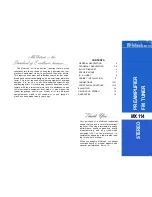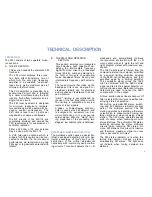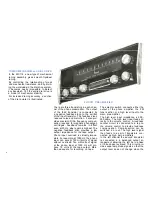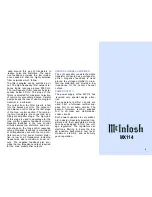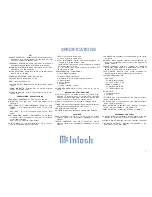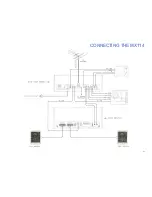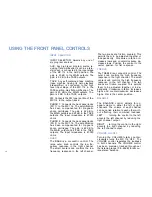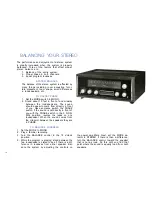
TUNING MECHANISM and DIAL DRIVE:
In the MX 114, a new type of mechanical
tuning assembly gives smooth flywheel
tuning.
By controlling the relationship of mass
and mechanical resistance, and by divid-
ing the workloads in the dial drive system,
it becomes nearly impossible to detect
any backlash. Yet, the entire dial drive is
a model of mechanical stability.
For increased tuning accuracy, a section
of the dial pointer is illuminated.
4
There are three transistors in each chan-
nel of the phono preamplifier. The output
of the third transistor is connected by
a negative feedback loop to the emitter
of the input transistor. The feedback loop
reduces noise and distortion. It also pro-
vides precision RIAA frequency compen-
sation required for magnetic phonograph
cartridges. Feedback remains in effect
even at 20 Hz, where gain is highest. The
negative feedback also provides a low
output impedance for the tape output.
Phono input overload is virtually impos-
sible. For example, at 1000 Hz, the phono
input can accept 150 millivolts of signal
without overload. Ten millivolts of signal
at the phono input at 1000 Hz will pro-
duce 1.2 volts at the tape output. More
than adequate for recording on tape.
The selector switch connects either the
output of the phono amplifier, the FM
tuner section or a high level input to the
main preamplifier.
The high level input impedance is 250,-
000 ohms. The high level input feeds di-
rectly to the volume control. A loudness
contour circuit is connected to a tap on
the volume control to provide loudness
compensation. Compensation can be
switched in or out. The high level signal
then feeds to a pair of transistors con-
nected as high gain amplifiers.
In the left channel the second transistor
is connected in a balanced output ar-
rangement allowing the left be in phase
or to be phase reversed. This circuit pro-
vides equal amplitude signals so that the
output level does not change when the
PHONO PREAMPLIFIER


